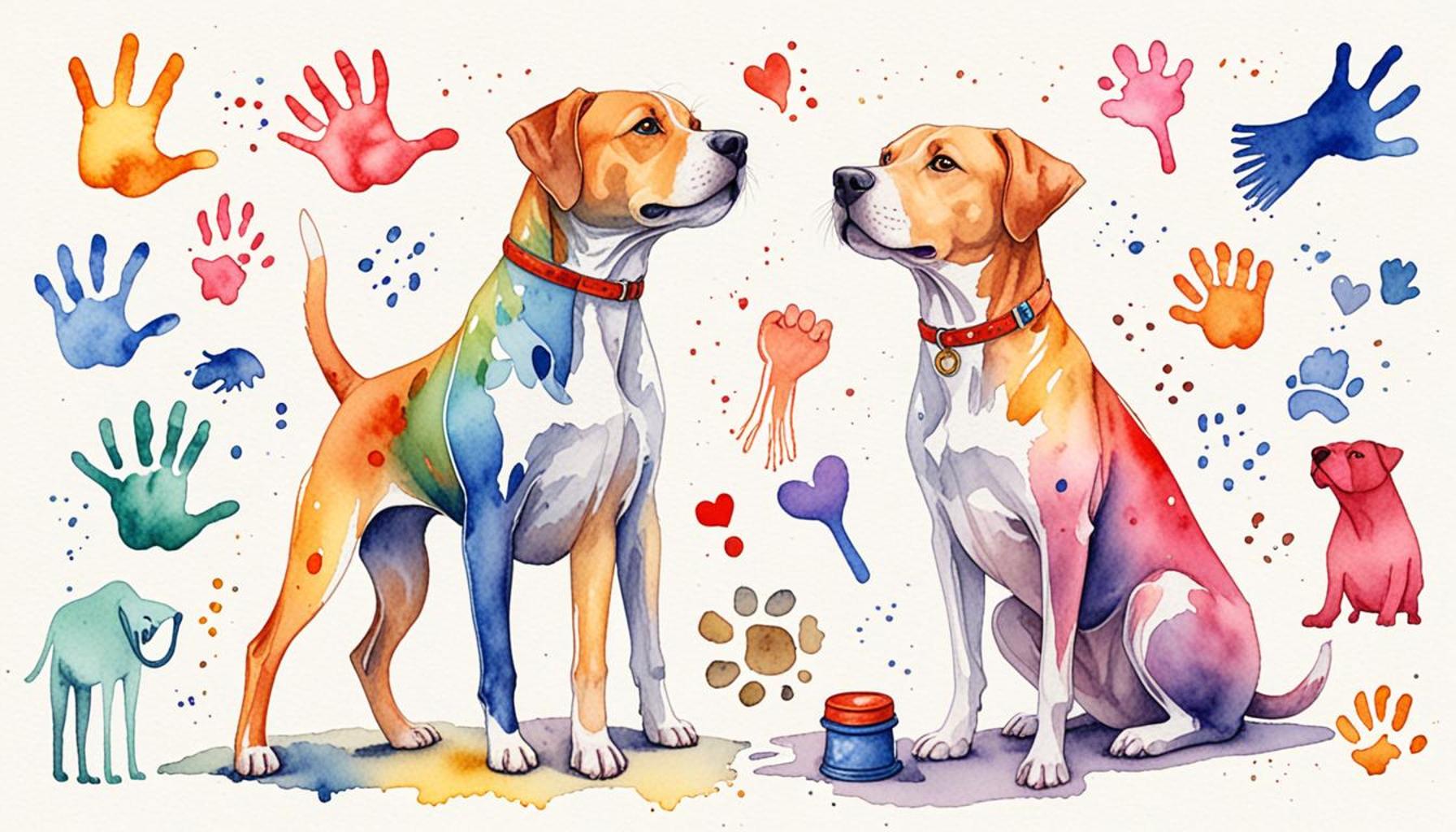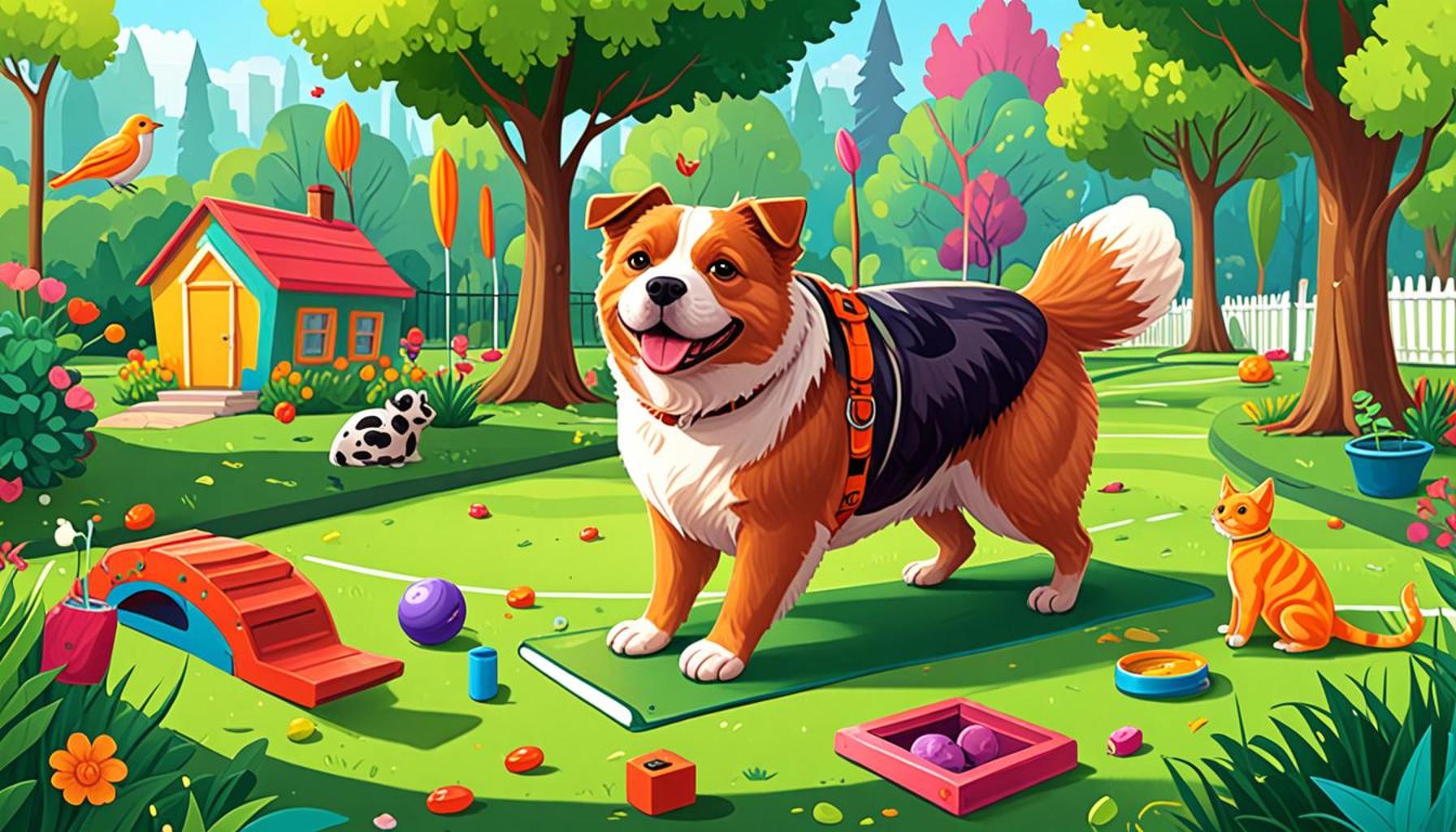Adapting Training Techniques for Different Breeds and Personalities

Understanding the Unique Needs of Our Canine Companions
Every dog is unique, shaped by their breed and individual personality. To effectively train different breeds, it’s essential to recognize their distinct traits and tendencies. For instance, herding breeds like Border Collies may respond best to activities that channel their drive and focus, such as agility training or herding drills. Their innate desire to work closely with humans can be harnessed to create a productive training environment.
Key Traits Influencing Training Methods
When adapting training techniques, consider these important factors:
- Energy Levels: High-energy breeds, such as Jack Russell Terriers, thrive on interactive and rigorous training. These dogs often require a considerable amount of exercise and mental stimulation to keep them engaged. Activities like fetch, obstacle courses, and even trick training not only help burn off energy but also keep their minds sharp.
- Temperament: More sensitive breeds, like Greyhounds, might require gentler approaches to prevent anxiety. Using soothing tones and positive reinforcement is crucial when working with these dogs. Understanding their body language and implementing calm, consistent training routines can foster a more reassuring atmosphere that minimizes stress.
- Intelligence: Breeds known for their intelligence, like German Shepherds and Poodles, can quickly learn complex commands and tricks. With their high capacity for learning, they often excel in obedience competitions or service dog roles. Incorporating problem-solving games or scent work can cater to their intellectual needs and deepen the training experience.
Understanding the specific needs of a dog not only fosters better learning but also strengthens the bond between pet and owner. Tailoring your training approach ensures that your dog feels engaged and motivated throughout the process. This customization is critical for achieving long-lasting results in obedience and behavior, leading to a more harmonious relationship in everyday life.
Why One Size Doesn’t Fit All
Applying a generic training method across all breeds can lead to frustration for both the dog and the trainer. The reality of dog training is that an approach effective for one breed may flop with another, especially when considering variations in personality and behavior. For example, a Labrador Retriever may respond well to enthusiastic praise and treats for positive reinforcement, while a Shiba Inu could become more independent and resist traditional training methods.
As you dive deeper into adapting training techniques, you’ll discover a world where empathy meets strategy. A successful trainer must assess each dog’s individual quirks and adjust their techniques accordingly. This adaptability not only enhances training success but also provides a richer, more fulfilling experience for both the canine and their human companion. Ultimately, understanding and catering to the unique needs of our furry friends not only results in better-trained dogs but also fosters trust and connection, making the training journey much more rewarding.
DISCOVER MORE: Click here for essential pet adoption tips
Tailoring Training Approaches to Breed Characteristics
In the realm of dog training, one of the fundamental principles is understanding that each breed comes with its unique set of needs and characteristics. This awareness allows trainers and owners to adapt their methods accordingly, creating a more productive learning environment. For example, breeds such as Boxers, known for their playful and energetic disposition, often require training techniques infused with plenty of physical activity and interactive challenges. Incorporating games and exercises that allow them to express their exuberance can significantly enhance their learning experience.
Common Breed Characteristics to Consider
Successful training hinges on a keen awareness of the following breed-specific characteristics:
- Work Ethic: Certain breeds, like Belgian Malinois and Doberman Pinschers, have a strong work drive and crave tasks that keep them engaged. Competitive obedience and scent detection can harness this drive, transforming training into a rewarding partnership.
- Social Needs: Breeds such as Golden Retrievers thrive on social interaction and often excel in training that involves teamwork. Utilizing group classes or playdates can cater to their sociable nature, reinforcing skills while enriching their social experience.
- Distractibility: Some breeds, particularly those with a high prey drive like Beagles, may struggle with focus in distracting environments. Training in controlled settings initially, followed by gradual exposure to different distractions, can help them learn to maintain concentration when it counts.
By recognizing and responding to these breed differences, trainers can cultivate an environment where their canine companions feel understood and valued. This approach is not just about achieving obedience; it fosters a connection that encourages trust and enhances communication between the dog and trainer. Customized training approaches help bridge the gap between a dog’s instinctive behaviors and the desired commands, making the learning process smoother and more enjoyable.
The Influence of Personality on Training
Beyond the overarching traits associated with breeds, individual personality plays a crucial role in shaping training techniques. Each dog has a unique temperament that can affect its receptiveness and motivation during training. Understanding a dog’s personality can guide trainers in selecting appropriate techniques that resonate with their specific needs.
For example, a curious and adventurous dog may respond enthusiastically to exploratory training methods that allow for scent work or interactive puzzles. In contrast, a shy or anxious dog may require a more subdued and patient approach, ensuring that the training environment is calming and non-threatening. Tailoring techniques to accommodate these personality traits can lead to greater success and a more enjoyable experience for both the dog and its trainer.
As we explore the various dimensions of adapting training techniques for different breeds and personalities, it becomes evident that understanding these nuances is essential for any dog owner or trainer committed to fostering a strong, cooperative relationship with their canine companion.
Understanding Breed-Specific Needs
When discussing Adapting Training Techniques for Different Breeds and Personalities, one of the prime considerations is the inherent traits of various breeds. For example, working breeds like Border Collies thrive on mental challenges and require structured training sessions that stimulate their intelligence. In contrast, toy breeds may respond better to gentle socialization techniques, emphasizing positive reinforcement to build confidence. Understanding these nuances not only enhances the dog’s training experience but also fosters a greater bond between the pet and owner.
Recognizing Individual Personalities
Beyond breed characteristics, individual personalities play a pivotal role in shaping effective training approaches. Some dogs may exhibit high energy and playful tendencies, which warrant highly interactive training methods filled with activities such as agility courses or fetch games. Other dogs might show signs of caution or anxiety, indicating a need for slower-paced, reassuring techniques that build trust over time. Each dog is unique, thus adapting the training to suit these individual quirks is vital for success.
| Category | Advantages |
|---|---|
| Tailored Training Techniques | Enhances learning effectiveness and engagement |
| Improved Behavioral Outcomes | Leads to better compliance and less frustration for both dog and owner |
The Importance of Patience and Consistency
Implementing varied training techniques requires patience and consistency from the owner. Dogs may not immediately adapt to new methods, and owners should be prepared to revisit strategies while remaining committed to the process. Regular practice creates a routine that can significantly strengthen learning. By keeping training sessions short but effective, owners can help maintain their dog’s interest and enthusiasm, which is essential for successful reinforcement of learned concepts.
Enhancing Socialization through Group Classes
Incorporating group classes into training regimens is another fruitful avenue for socializing dogs of varying breeds and personalities. Interacting with other dogs and people in a controlled environment can mitigate behavioral issues while enhancing social skills. For breeds that have a propensity for aggression or shyness, these classes can facilitate gradual exposure, greatly benefiting their emotional wellbeing. Ultimately, fostering a positive training atmosphere encourages both learning and socialization, further solidifying the bond with their human companions.
DIVE DEEPER: Click here for essential pet adoption tips
Integrating Positive Reinforcement with Personality Types
When adapting training techniques for different breeds and personalities, one of the most effective strategies is the implementation of positive reinforcement. This method capitalizes on a dog’s natural instincts and encourages the desired behavior through rewards, shaping a more conducive learning atmosphere. Each dog responds uniquely to reinforcement based on its individual personality, making it crucial to tailor the approach accordingly.
Understanding the Spectrum of Motivation
Dogs can be broadly categorized into different motivational spectrums, which can significantly influence training success. For instance:
- Food-Oriented Dogs: Breeds such as Terriers and certain mixes often exhibit a strong affinity for food rewards. Incorporating high-value treats and varied food puzzles into training sessions can keep these dogs engaged and motivated. This technique is fundamental in teaching challenging commands or behaviors, as their desire for treats can encourage persistence.
- Play-Driven Canines: Dogs like Retrievers or Border Collies may respond more enthusiastically to play-based rewards. Using games like fetch or tug-of-war to reinforce behaviors can enhance learning, transforming training into an enjoyable bonding experience.
- Affection-Seeking Pups: Breeds known for their affectionate nature, such as Cavalier King Charles Spaniels or Pugs, may thrive on praise and physical affection as rewards. The use of gentle cuddles and petting after successful training sessions can boost their confidence and encourage repetition of the desired behavior.
Recognizing these differences in motivational styles can lead to effective training sessions that align with each dog’s intrinsic motivations. Understanding a dog’s response to various rewards requires observation and adaptation to ensure maximum efficacy.
Adapting Techniques Based on Learning Styles
Different breeds and personalities also possess distinct learning styles. For example, clicker training may work exceptionally well for intelligent breeds such as German Shepherds or Standard Poodles, as they often have quick learning curves and can associate the sound of the click with a specific action to reinforce. In contrast, dogs with a more laid-back personality, such as Bulldogs, may benefit more from slow-paced methods that allow them to absorb commands at their own pace. Breaking down complex tasks into small, manageable steps can enhance understanding and reduce frustration for these dogs.
Moreover, socialization techniques can greatly differ based on personality. For excitable or hyperactive breeds, such as Jack Russell Terriers, gradual exposure to different environments and rigorous socialization with other dogs can help temper their exuberance. On the other hand, shy or fearful breeds like Shih Tzus may require a gentler approach. Working to establish a safe zone and using gradual exposure methods can help to build their confidence without overwhelming them.
Ultimately, successfully adapting training techniques requires patience and flexibility. It’s imperative for trainers to remain observant and responsive to a dog’s reactions, adjusting their strategies as necessary to meet the evolving needs of their canine companions.
DISCOVER MORE: Click here for insights on urban puppy socialization
Conclusion
In the realm of dog training, understanding and adapting to the unique characteristics of different breeds and personalities is not just beneficial—it’s essential. By recognizing that each dog possesses its own learning styles, motivations, and temperaments, trainers can tailor their approaches for optimal results. Implementing positive reinforcement techniques that resonate with individual dogs ensures a more effective learning experience. Whether a canine thrives on food, play, or affection, leveraging these motivational drivers can transform training sessions into engaging and rewarding interactions.
Furthermore, the learning styles of dogs vary significantly. While intelligent breeds may flourish under structured methods like clicker training, more reserved dogs might require a gentler pace that accommodates their need for time and calm. Awareness of these differences can lead to more productive training sessions and better relationships between dogs and their handlers. It is also crucial to adapt socialization techniques according to emotional needs; excitable dogs may benefit from energetic environments, whereas timid dogs require nurturing atmospheres to build confidence.
As trainers and dog owners embark on this journey, the importance of patience, flexibility, and continuous observation cannot be overstated. Each interaction offers insights that can further refine training methods. By embracing a customized and empathetic approach, we can foster happier, well-adjusted dogs while enhancing the joy of training. The impact of understanding and adapting to a dog’s unique personality not only benefits the individual dog but also contributes to a harmonious human-canine relationship, paving the way for lasting companionship.



